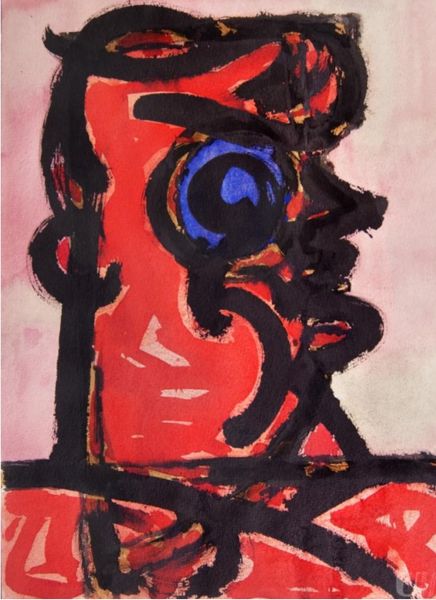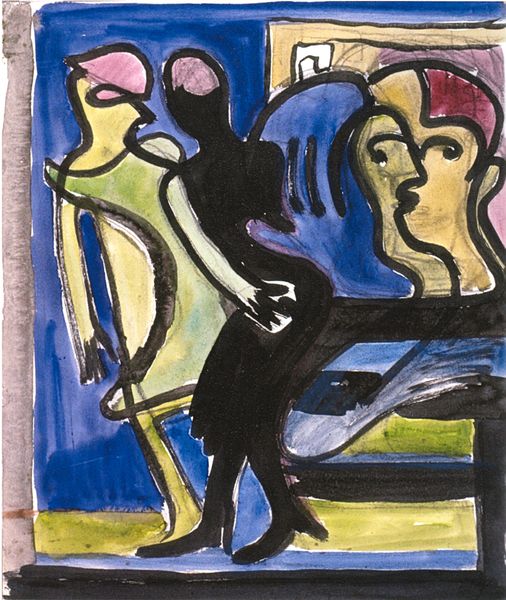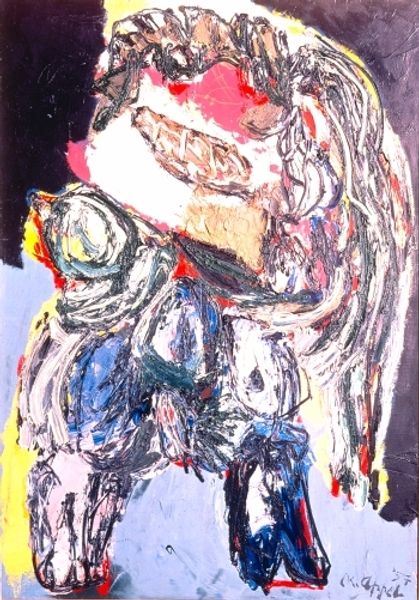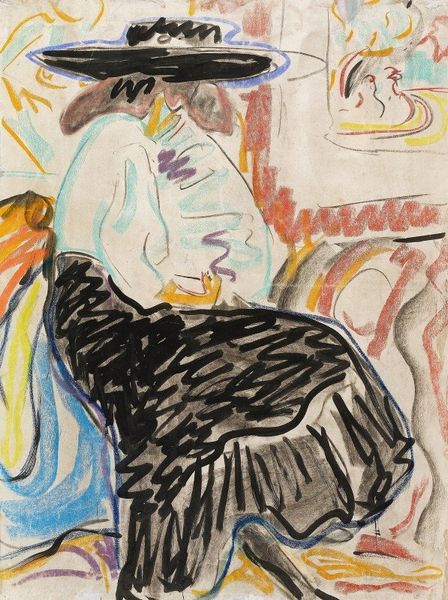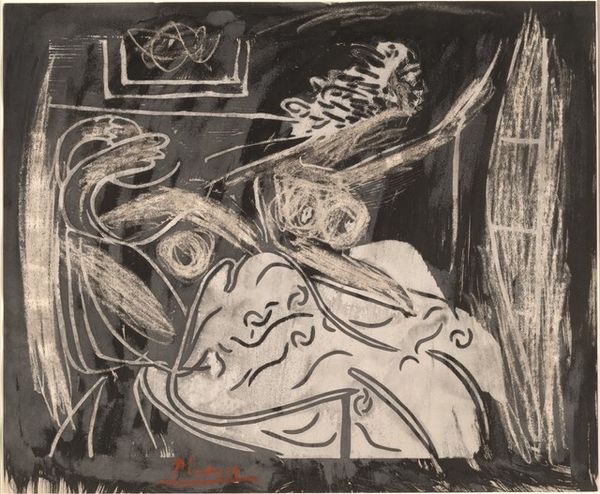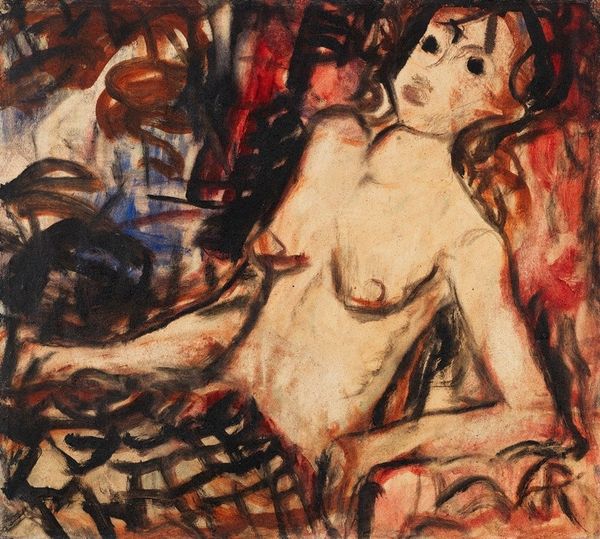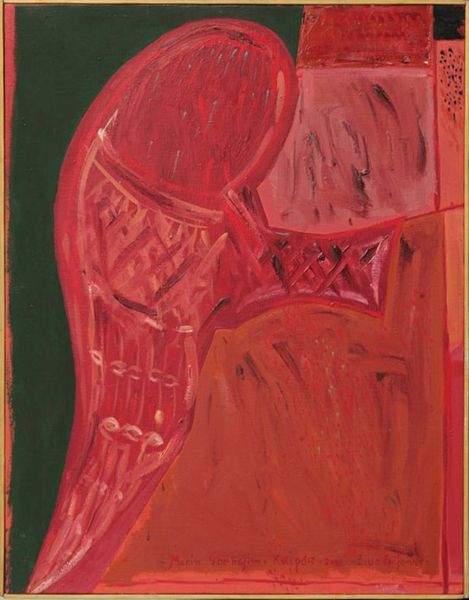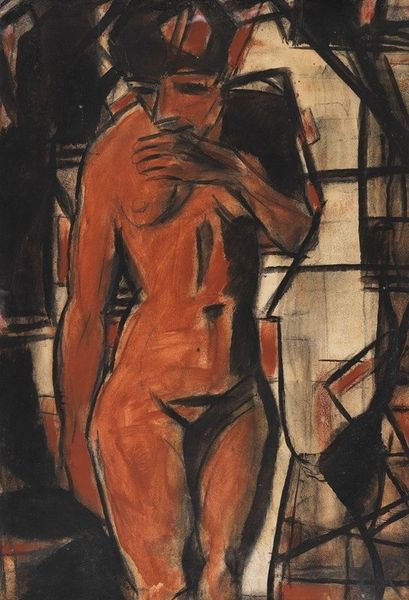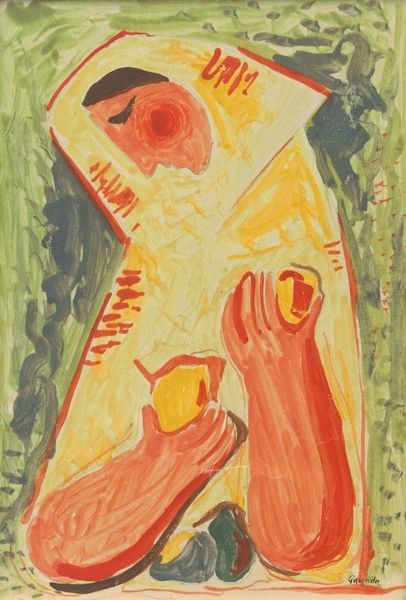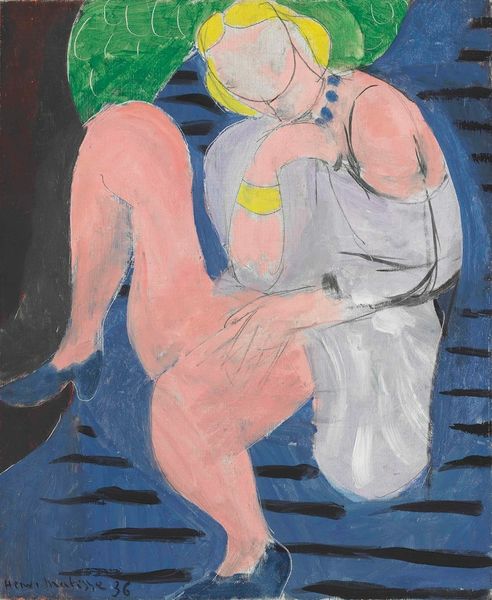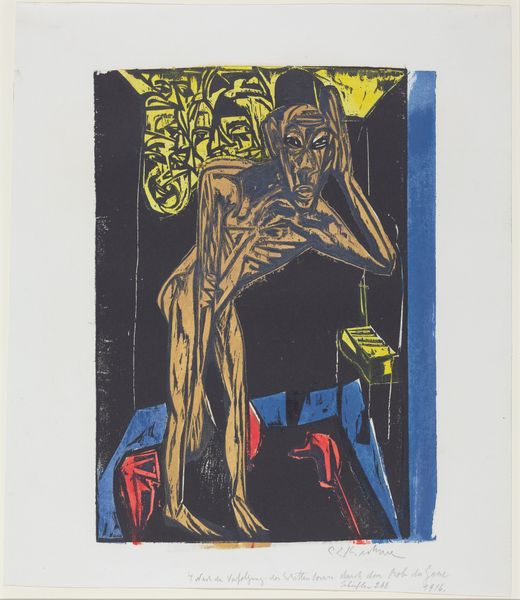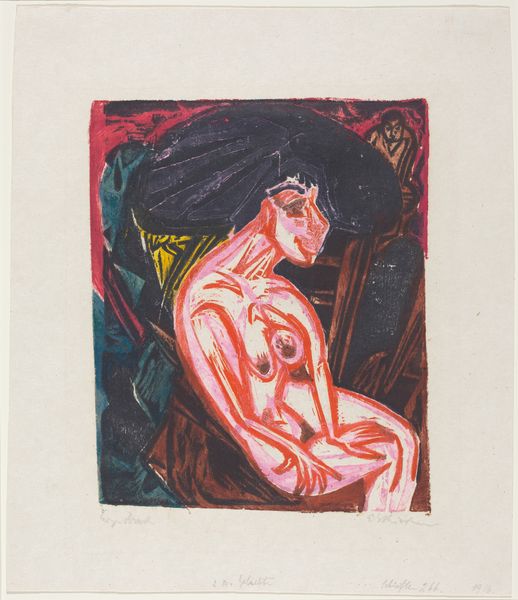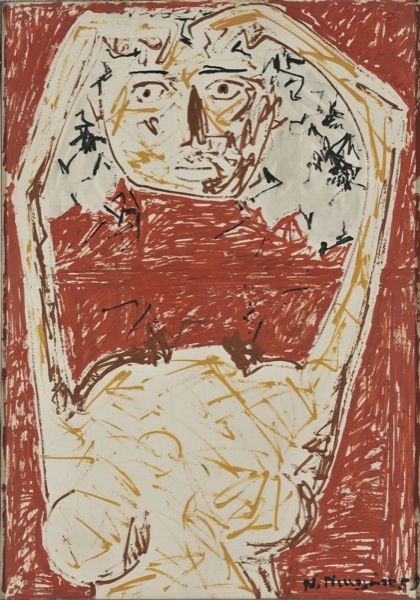
print, woodcut
#
portrait
# print
#
german-expressionism
#
figuration
#
expressionism
#
woodcut
#
the-seven-and-five-society
#
portrait art
#
expressionist
Copyright: Public Domain: Artvee
Editor: Here we have Ernst Ludwig Kirchner’s “Die Geliebte,” created in 1915. It's a striking woodcut print with a very raw and expressive feel to it. The figure, seemingly a nude woman, appears both vulnerable and defiant. What stands out to you in this piece? Curator: For me, Kirchner’s woodcut isn't just about capturing the likeness of a lover; it's about interrogating the complex dynamics of relationships, particularly within the tumultuous context of early 20th-century Germany. Think about the social and political upheaval, the shifting gender roles... how do you think those anxieties might be present here? Editor: I hadn't considered that. The sharp, angular lines and the almost jarring color palette – the pinks and blues against the dark background – certainly contribute to a feeling of unease, of something being off-kilter. Maybe that unease is reflective of that social and political turbulence? Curator: Precisely. The Expressionists used distortion and abstraction not to shy away from reality, but to amplify the psychological and emotional weight of it. Consider the male gaze, the power dynamics inherent in portraying a nude figure, especially during a time of evolving societal expectations of women. How might we read this image as a comment on those power dynamics? Editor: It's interesting… the woman’s pose does seem a bit contorted, maybe even uncomfortable. It makes you wonder about her agency within the relationship, or perhaps more broadly, within society. It isn't necessarily a celebratory nude in the traditional sense. Curator: Exactly! Kirchner is engaging with a visual language that critiques rather than glorifies. The roughness of the woodcut itself is also important; it speaks to the rawness of human emotion, the breakdown of social norms. Looking at this work through a contemporary lens, we can see it anticipating conversations around gender, identity, and power that continue to resonate today. Editor: This has given me a lot to think about; I’ll never look at this work again without considering its complex social and political layers. Curator: And hopefully you’ll encourage others to do the same! It’s about constantly re-evaluating how art speaks to the past, present, and future.
Comments
No comments
Be the first to comment and join the conversation on the ultimate creative platform.
